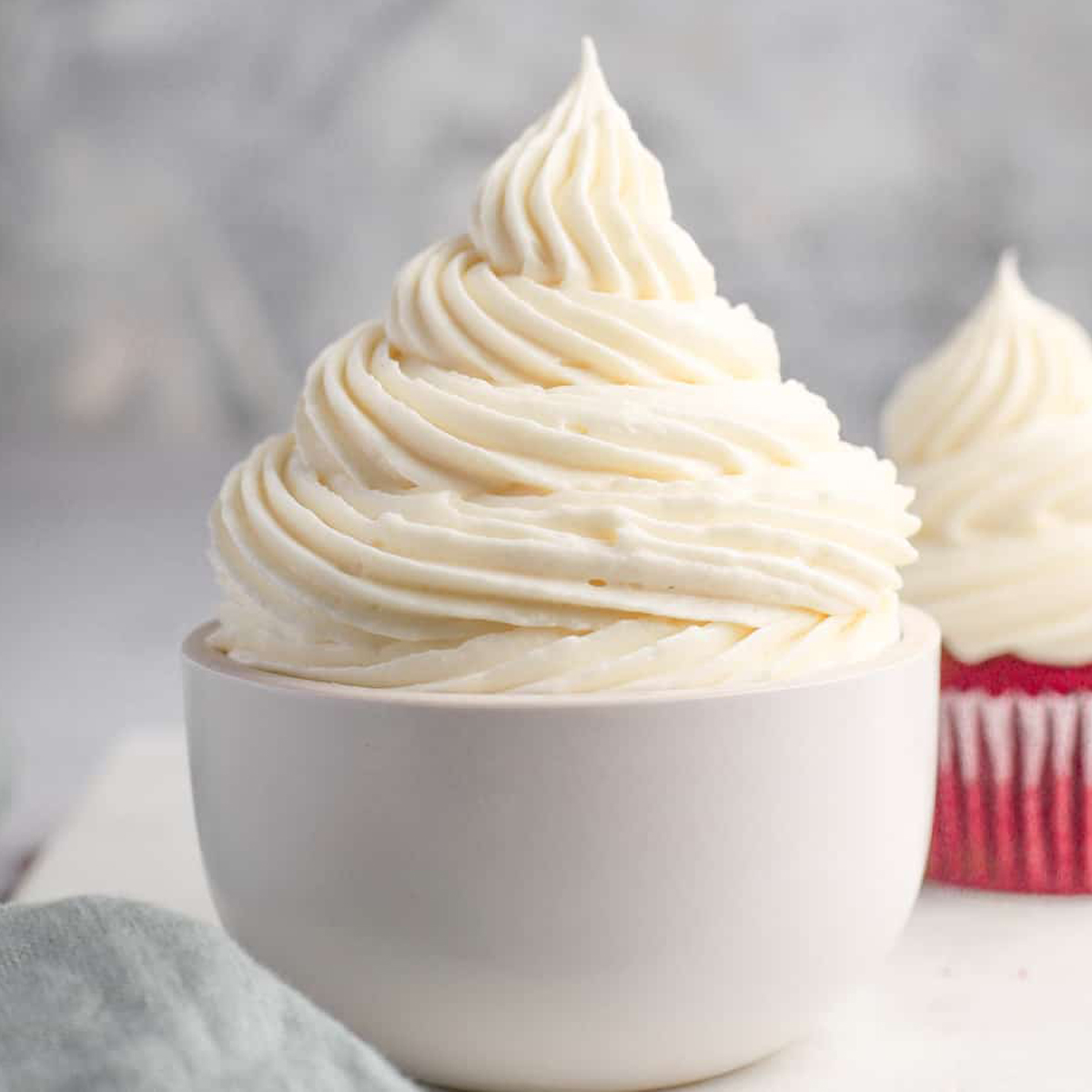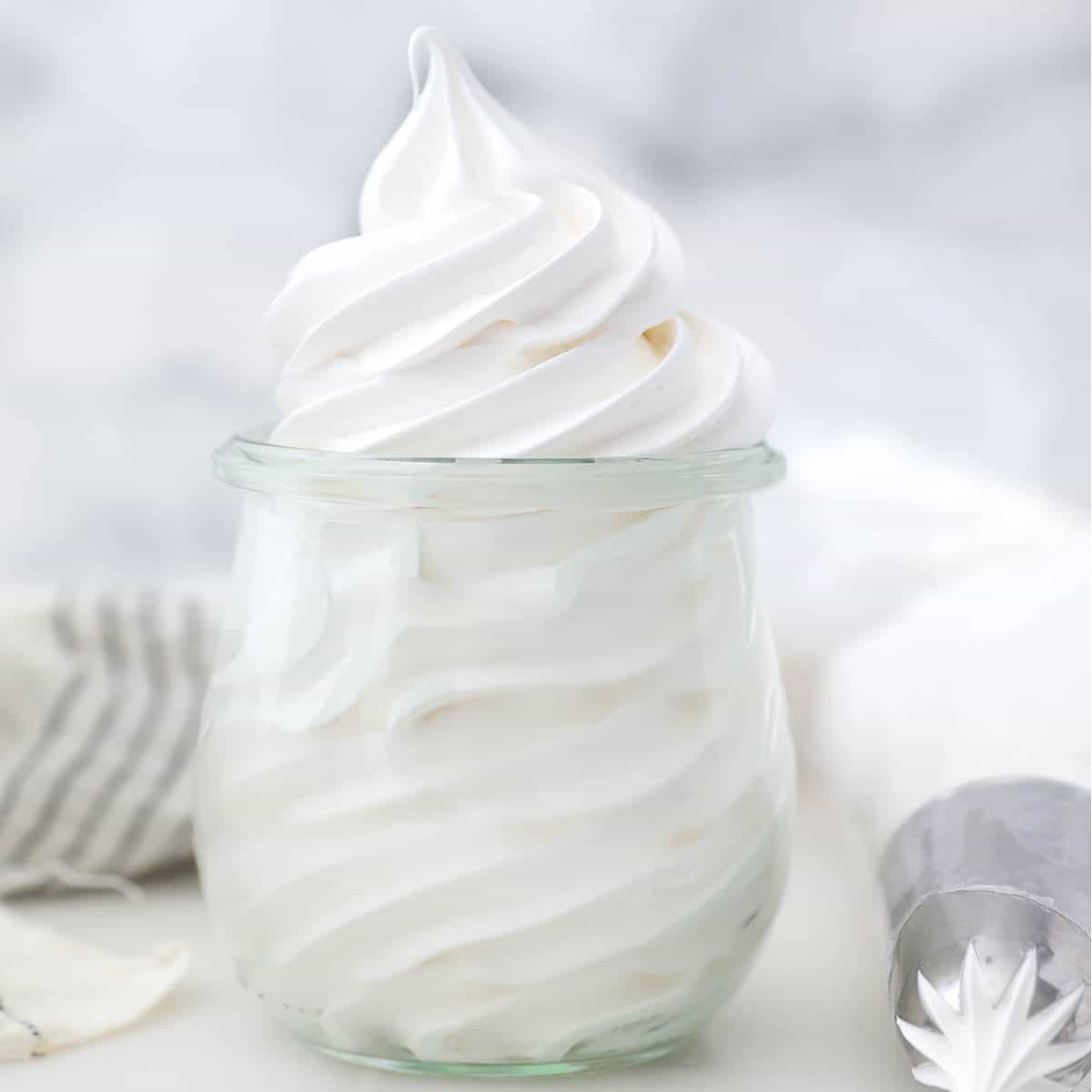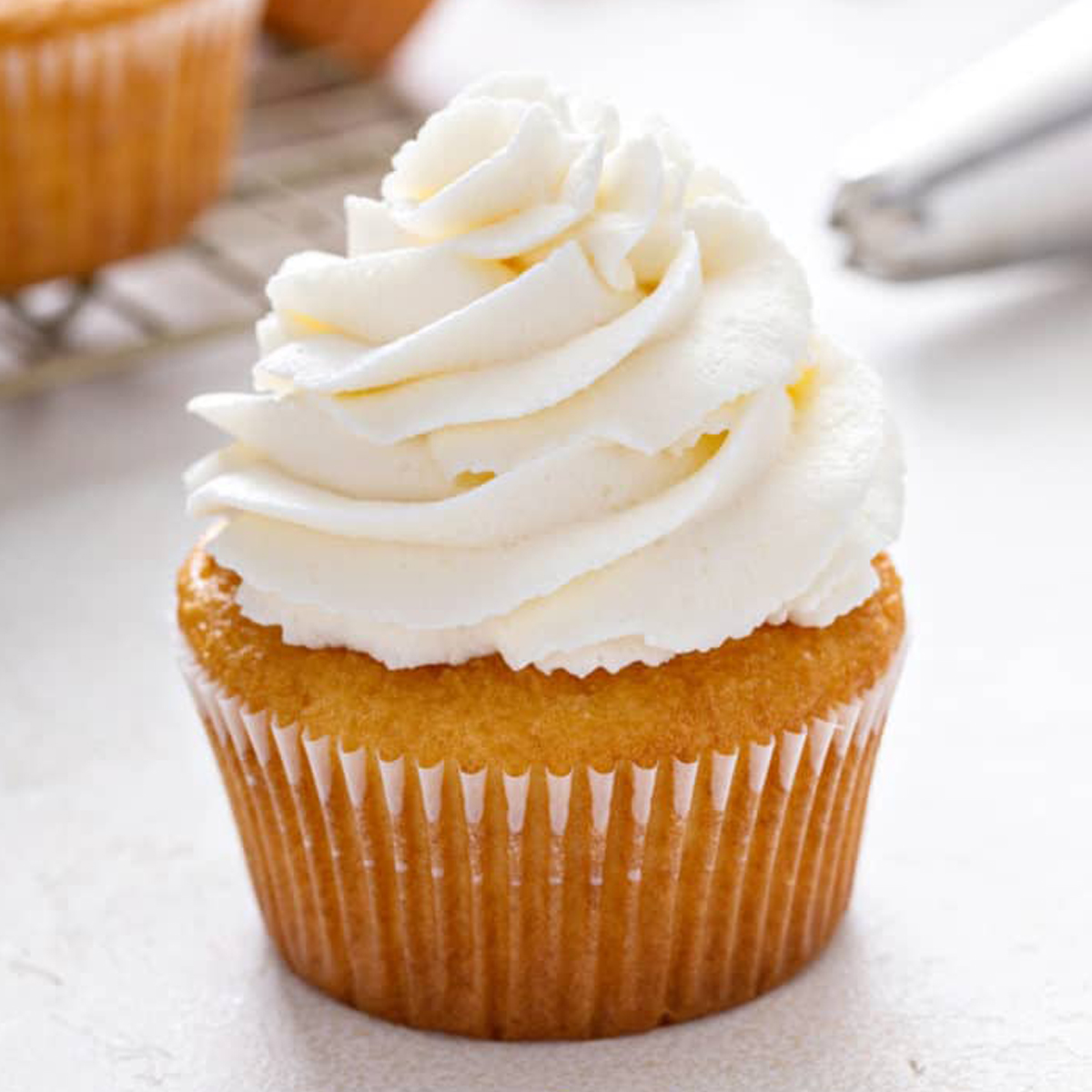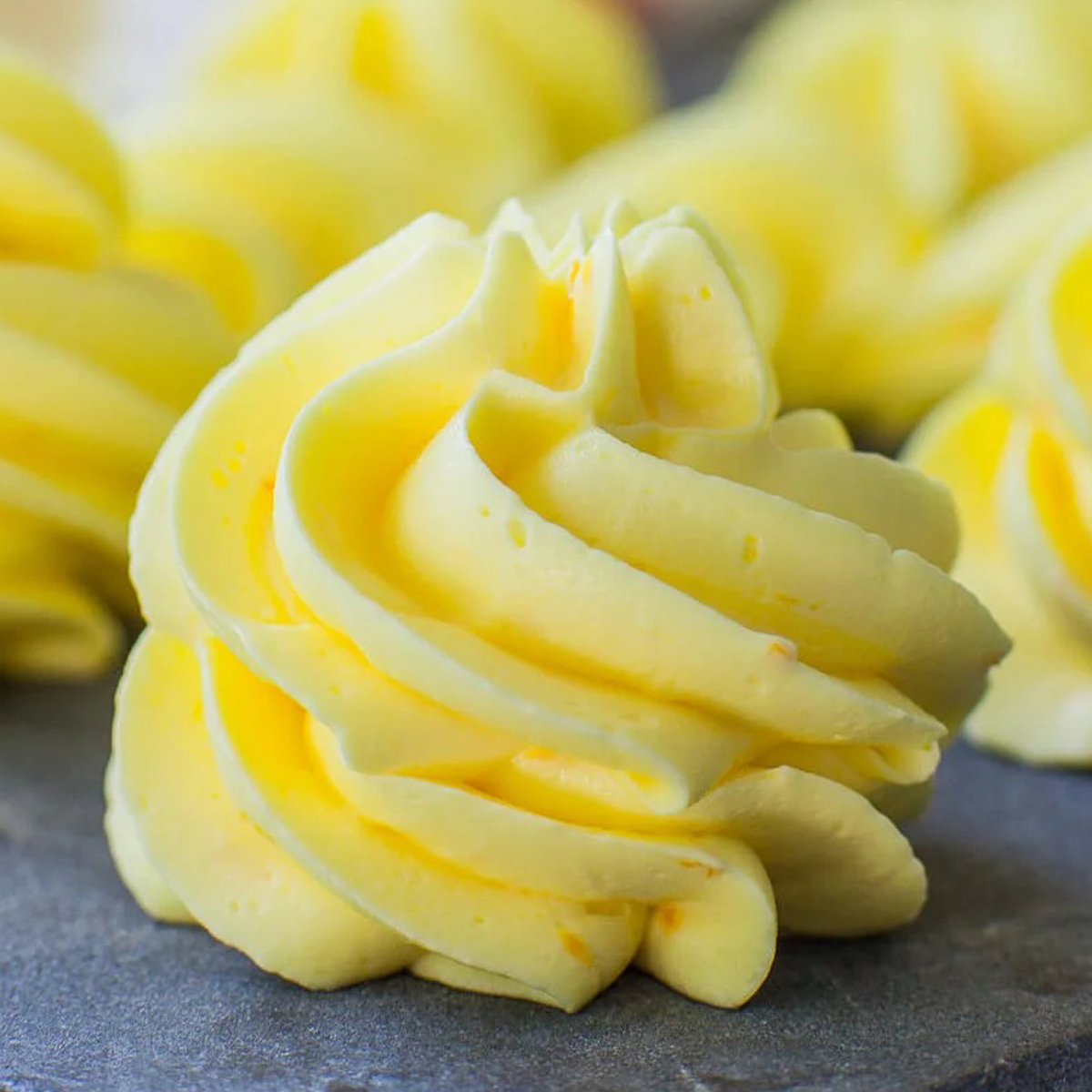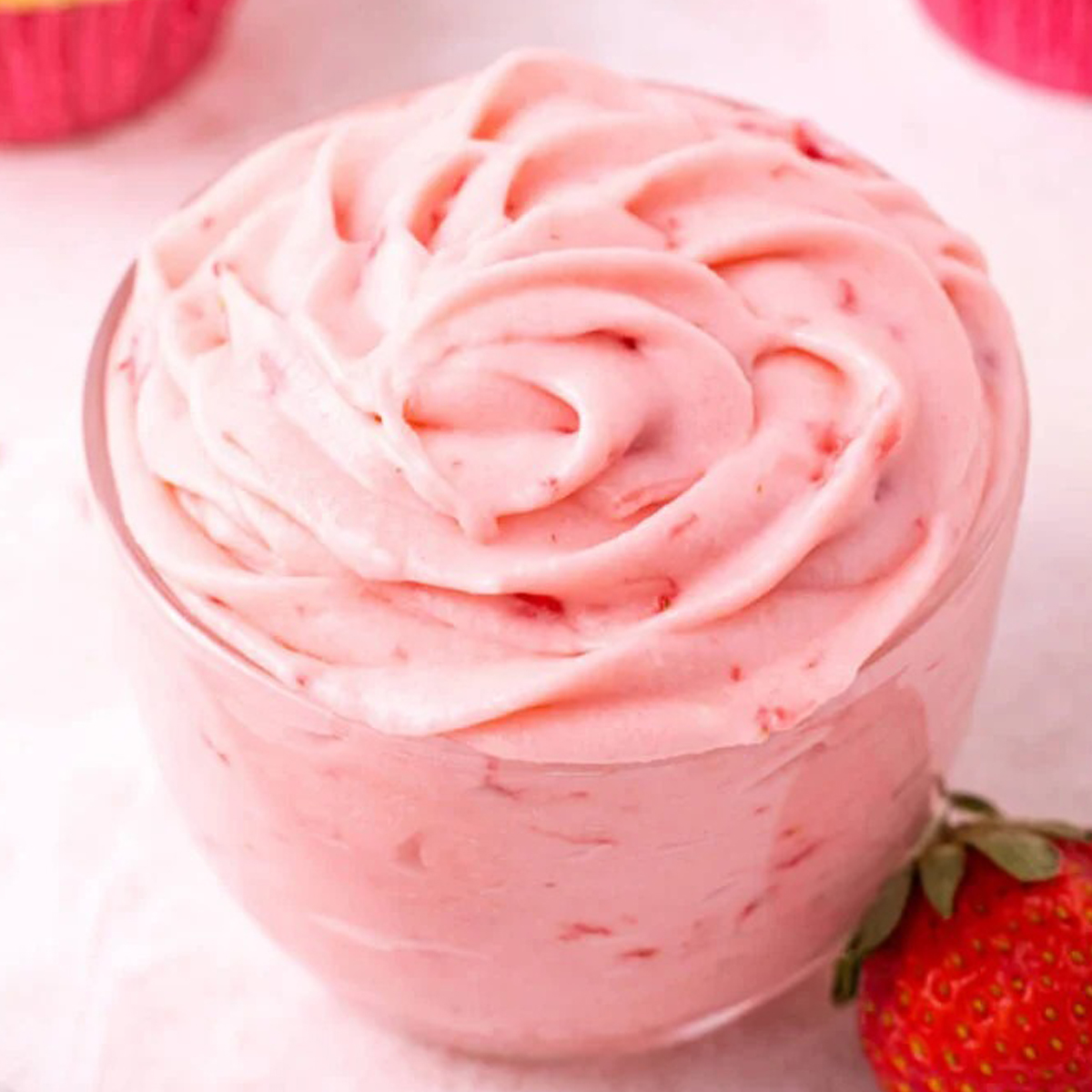Cream cheese frosting is a delectable and versatile topping that adds a luscious richness to a wide range of baked goods. Known for its creamy texture and delightful tanginess, cream cheese frosting is a popular choice for cakes, cupcakes, cookies, and pastries. This velvety frosting strikes a perfect balance between sweetness and tang, creating a harmonious contrast that complements both rich and fruity flavors. Its smooth consistency makes it easy to spread and decorate with, enhancing the visual appeal of desserts while providing a luxurious, melt-in-your-mouth experience. Whether slathered generously over a classic carrot cake or elegantly piped onto a red velvet cupcake, cream cheese frosting is a cherished treat that elevates any confection into a truly indulgent delight.

What is Cream Cheese Frosting?
Cream cheese frosting is a popular type of icing or topping used to decorate and enhance the flavor of various baked goods. It’s made by combining cream cheese, butter, powdered sugar, and often a touch of flavoring. The result is a creamy, tangy, and slightly sweet frosting that pairs exceptionally well with a wide range of desserts.
Ingredients:
- Cream Cheese: The primary ingredient that gives this frosting its distinctive tangy flavor and creamy texture.
- Butter: Often combined with cream cheese to provide additional richness and a smoother consistency.
- Powdered Sugar: Also known as confectioners’ sugar, this sweetens and thickens the frosting. The amount used can be adjusted to achieve the desired level of sweetness.
- Flavoring: While not always necessary, vanilla extract is a common choice for enhancing the overall flavor. Lemon zest or other extracts can also be used for variety.
Preparation:
- Softening Ingredients: Both the cream cheese and butter should be softened to room temperature before making the frosting. This allows for easier mixing and a smoother texture.
- Creaming: The softened cream cheese and butter are beaten together until smooth and well combined. This step creates the base of the frosting.
- Adding Sugar: Powdered sugar is gradually added to the creamed mixture. Beating at low speed prevents the sugar from creating a dusty mess.
- Flavoring: Vanilla extract (or other flavorings) can be added for an extra layer of taste. Citrus zest can be added for citrusy variations.
- Mixing: The mixture is then beaten until the ingredients are fully incorporated and the frosting is smooth and creamy.
Uses:
Cream cheese frosting is a versatile topping that can be used in various ways:
- Cakes: It’s a classic choice for cakes like carrot cake, red velvet cake, and banana cake.
- Cupcakes: Cream cheese frosting is a favorite for cupcakes, adding a touch of elegance and flavor.
- Cookies: It can be sandwiched between cookies or used as a filling for whoopie pies.
- Pastries: Cream cheese frosting can be used to fill pastries or as a drizzle over danishes.
- Dessert Bars: It’s a delightful topping for dessert bars like brownies or blondies.
- Decorating: Cream cheese frosting can be piped or spread onto baked goods, and it’s often used for decorative touches.
Note: Cream cheese frosting should be stored in the refrigerator due to its dairy content, especially if the weather is warm. Let it soften slightly at room temperature before using if it becomes too firm in the fridge.
Overall, cream cheese frosting is cherished for its versatility, creamy texture, and balanced flavor profile that complements a variety of sweet treats.

Why you will love Cream Cheese Frosting?
There are several reasons why you’ll love cream cheese frosting:
1. Irresistible Flavor: Cream cheese frosting strikes the perfect balance between sweet and tangy. The creamy richness of cream cheese combined with the subtle tanginess creates a flavor profile that’s both indulgent and refreshing.
2. Creamy and Velvety Texture: The texture of cream cheese frosting is incredibly smooth and velvety. It’s easy to spread, pipe, or swirl onto baked goods, making it a joy to work with when decorating cakes, cupcakes, and more.
3. Versatility: Cream cheese frosting complements a wide range of desserts, from classic carrot cake to rich red velvet cupcakes. Its adaptable nature means you can use it with various flavors, making it a go-to option for many recipes.
4. Beautiful Presentation: Cream cheese frosting’s creamy consistency lends itself well to decorative elements. It can be piped into intricate designs or simply spread smoothly over a cake for an elegant finish.
5. Harmonious Contrast: The tanginess of the cream cheese frosting pairs beautifully with both fruity and chocolaty flavors. This contrast creates a delightful interplay of tastes that elevates the overall experience of your dessert.
6. Homemade Feel: Making cream cheese frosting from scratch gives your baked goods a homemade touch that’s hard to replicate with store-bought options. It’s a surefire way to impress friends and family.
7. Customizable: You can adjust the sweetness and flavor of the frosting to suit your preferences. Experiment with different extracts, zests, or even add-ins like chopped nuts or fruits.
8. Comforting and Nostalgic: Cream cheese frosting often evokes feelings of comfort and nostalgia. It’s a classic choice that brings back memories of enjoying baked treats at special occasions and gatherings.
9. Perfect for Celebrations: Cream cheese frosting is a fantastic choice for celebrations, parties, and holidays. Its luxurious taste and appearance make it a favorite for birthdays, weddings, and festive events.
10. Easy to Make: Despite its gourmet taste, cream cheese frosting is quite simple to make with just a few basic ingredients. Even beginner bakers can achieve impressive results.
In essence, cream cheese frosting is a versatile, flavorful, and delightful topping that enhances the taste, appearance, and overall experience of your baked creations. Whether you’re a seasoned baker or just starting out, this frosting is sure to become a favorite in your culinary repertoire.

Cream Cheese Frosting Recipe
Ingredients
- 8 oz (226 g) cream cheese, softened to room temperature
- 1/2 cup (1 stick or 113 g) unsalted butter, softened to room temperature
- 4 cups (480 g) powdered sugar, sifted
- 1 teaspoon vanilla extract
- Optional: Lemon zest for added flavor
Instructions
- Prepare Ingredients:
- Take the cream cheese and butter out of the refrigerator and allow them to come to room temperature. This will ensure a smooth and creamy texture for the frosting.
- Sift the powdered sugar to remove any lumps and ensure a silky consistency.
- Cream the Cream Cheese and Butter:
- In a large mixing bowl, use an electric mixer (handheld or stand mixer) to beat the softened cream cheese and butter together until well combined and creamy. This should take about 2-3 minutes.
- Add Vanilla Extract and Lemon Zest:
- Add the vanilla extract to the cream cheese and butter mixture. You can also add some finely grated lemon zest at this point for an extra layer of flavor. Mix until incorporated.
- Gradually Add Powdered Sugar:
- With the mixer on low speed, gradually add the sifted powdered sugar to the mixture. Adding it in portions helps prevent a dusty mess. Scrape down the sides of the bowl as needed.
- Mix Until Smooth:
- Once all the powdered sugar is added, increase the mixer speed to medium and beat the mixture until smooth and creamy. This should take about 2-3 minutes. The frosting will become lighter in color and increase in volume.
- Taste and Adjust:
- Taste the frosting and adjust the sweetness or flavor to your preference. You can add a touch more vanilla extract or lemon zest if desired.
- Use or Store:
- The cream cheese frosting is now ready to use. You can spread it on cakes, cupcakes, or other baked goods as desired. If not using immediately, cover the bowl with plastic wrap and refrigerate.
- Bringing to Room Temperature:
- If the frosting becomes too firm in the refrigerator, let it sit at room temperature for a short while. This will make it easier to spread or pipe.
Note:
- Make sure your cream cheese and butter are truly softened to room temperature. This ensures a smooth texture and proper blending.
- Adjust the amount of powdered sugar to achieve your desired level of sweetness. You can add more or less depending on your taste.
- Feel free to experiment with other flavorings, such as almond extract or different citrus zests.
Enjoy your homemade Cream Cheese Frosting on your favorite baked treats!

How to serve
Cream cheese frosting is incredibly versatile and can be served in various ways, depending on the dessert you’re pairing it with and your personal preferences. Here are some ideas for serving cream cheese frosting:
- On Cakes: Spread a generous layer of cream cheese frosting between cake layers and on the top and sides of the cake. You can leave it smooth or create decorative swirls and patterns using a spatula or piping bag.
- On Cupcakes: Swirl cream cheese frosting on top of cupcakes using a piping bag and a decorative tip. You can also spread it with a knife for a more rustic look.
- As a Dip: Serve cream cheese frosting as a dip for fresh fruit, such as strawberries, apple slices, or grapes. This is a fun and delicious option for parties and gatherings.
- With Cookies: Use cream cheese frosting as a filling between two cookies to create sandwich cookies. Sugar cookies, oatmeal cookies, or even graham crackers work well for this.
- On Bars and Brownies: Spread cream cheese frosting over dessert bars or brownies for an extra layer of flavor and creaminess. It adds a delightful contrast to the richness of the chocolate.
- In Parfaits: Layer cream cheese frosting with crumbled cake or cookies, whipped cream, and fresh berries in individual serving glasses for a delightful dessert parfait.
- As a Filling: Fill pastries, such as danishes or turnovers, with cream cheese frosting for an indulgent twist.
- On Pancakes or Waffles: Spread a dollop of cream cheese frosting on top of pancakes or waffles for a decadent breakfast treat. Drizzle with syrup for an extra touch of sweetness.
- As a Topping: Dollop cream cheese frosting on a slice of pumpkin or banana bread for an extra special treat.
- Decorative Touches: Use cream cheese frosting to pipe decorative accents on desserts. This could include rosettes, swirls, dots, or even writing messages.
- Dip for Pretzels: Serve cream cheese frosting as a dip for pretzels, creating a sweet and salty combination that’s sure to please.
Remember that cream cheese frosting contains dairy and should be refrigerated if not consumed immediately. If you’re serving it in warmer weather, keep it chilled until right before serving to maintain its texture.
Overall, cream cheese frosting adds a delightful tangy sweetness to a wide variety of desserts, enhancing their flavor and presentation. Get creative with your serving ideas and enjoy the wonderful taste and texture it brings to your culinary creations.

How to store
Properly storing cream cheese frosting is essential to maintain its texture, freshness, and safety. Since cream cheese frosting contains dairy products, it needs to be handled and stored correctly. Here’s how to store cream cheese frosting:
- Refrigeration: Cream cheese frosting should always be stored in the refrigerator, especially if your environment is warm. Cream cheese and dairy-based ingredients can spoil if left at room temperature for extended periods.
- Airtight Container: Transfer the cream cheese frosting to an airtight container. This helps prevent the frosting from absorbing any odors from other foods in the refrigerator and keeps it from drying out.
- Plastic Wrap or Parchment Paper: If you’re not using an airtight container, you can cover the surface of the frosting directly with plastic wrap or parchment paper. Press the wrap or paper gently against the frosting to minimize air exposure.
- Avoid Freezing: While some frostings can be frozen, cream cheese frosting doesn’t freeze well. Freezing can cause separation and changes in texture when thawed, leading to an undesirable consistency.
- Expiration Date: Cream cheese frosting typically stays fresh for about 3-4 days when stored in the refrigerator. However, if your cream cheese or other ingredients were nearing their expiration dates when you made the frosting, the frosting’s shelf life will be shortened.
- Bringing to Room Temperature: If the cream cheese frosting becomes too firm in the refrigerator, you can let it sit at room temperature for a short while before using. Avoid leaving it out for extended periods, as this can lead to spoilage.
- Re-Mixing: After being stored in the refrigerator, cream cheese frosting might firm up slightly. Before using, you can give it a gentle mix to restore its smooth and creamy texture.
- Visual and Smell Check: Before using any leftover cream cheese frosting, inspect it visually and give it a sniff. If it looks discolored, has an off smell, or shows signs of mold, discard it immediately.
Remember that food safety is paramount. If you’re in doubt about the freshness of your cream cheese frosting, it’s better to err on the side of caution and not use it. Proper storage will help you enjoy your cream cheese frosting safely and with its intended taste and texture.
If You Love This Recipe Try These Out!
- Dreamy Lemon Cream Frosting
- Enchanting Raspberry Cream Frosting
- Captivating Tastes Of Strawberry Cream Frosting
- Unveiling The Artistry Of Chocolate Cream Frosting
- The Marvel Of Chocolate Marshmallow Frosting
Tips to make perfect Cream Cheese Frosting
Making the perfect cream cheese frosting involves attention to detail and some key techniques. Here are some tips to help you achieve a flawless cream cheese frosting every time:
Ingredients:
- Room Temperature Ingredients: Ensure that both the cream cheese and butter are at room temperature before starting. This prevents lumps and helps create a smooth and creamy texture.
- Quality Ingredients: Use high-quality cream cheese and unsalted butter for the best flavor and texture. Avoid using low-fat cream cheese as it can affect the frosting’s consistency.
- Sifted Powdered Sugar: Sift the powdered sugar before adding it to the frosting mixture. This helps prevent lumps and ensures a silky-smooth texture.
Mixing:
- Start Slowly: When mixing the cream cheese and butter, start at a low speed to avoid splattering. Once they are combined, you can increase the speed to achieve the desired consistency.
- Gradual Sugar Addition: Add the powdered sugar gradually in batches. This prevents a cloud of powdered sugar and minimizes the risk of over-mixing.
- Don’t Overmix: Overmixing can lead to a runny or curdled texture. Mix just until the ingredients are combined and the frosting is smooth.
Texture and Consistency:
- Soft and Smooth: Aim for a frosting that is soft, creamy, and spreadable. It should hold its shape when piped but still be easy to spread.
- Avoid Overbeating: Be cautious not to overbeat the cream cheese and butter mixture, as this can incorporate too much air and lead to a lighter, fluffier texture than desired.
Flavor and Variations:
- Balancing Sweetness and Tang: Achieve the right balance between sweetness and tanginess by adjusting the amount of powdered sugar and the flavorings.
- Flavorings: Add vanilla extract for a classic flavor, or experiment with other extracts like almond, coconut, or even citrus zest to enhance the taste.
Application:
- Chill Before Decorating: If you’re using the frosting for piping or intricate decorations, it’s helpful to chill it in the refrigerator for about 15-30 minutes. This firms up the frosting and makes it easier to handle.
- Decorating Techniques: If you’re new to piping, practice on a plate or parchment paper before decorating your baked goods. Use different piping tips for various designs.
Storage:
- Refrigerate: Store any leftover cream cheese frosting in an airtight container in the refrigerator. It can be kept for a few days, but for the best quality, use it within 3-4 days.
- Restoring Texture: If the frosting becomes too firm after refrigeration, let it sit at room temperature for a short while, then give it a gentle mix to restore its creamy consistency.
With these tips in mind, you’ll be well on your way to creating perfect cream cheese frosting that’s rich, smooth, and bursting with flavor for your favorite baked goods.

FAQ’s
- Can I use salted butter in cream cheese frosting? It’s best to use unsalted butter in cream cheese frosting so you can control the amount of salt. If you only have salted butter, reduce or omit any additional salt in the recipe.
- Why is my cream cheese frosting too runny? Overmixing or using cream cheese and butter that are too soft can result in a runny frosting. If this happens, you can try chilling the frosting in the refrigerator for a short while to firm it up before using.
- My cream cheese frosting is lumpy. What should I do? Lumps can occur if the cream cheese and butter are not fully softened or if the powdered sugar isn’t well incorporated. Make sure all ingredients are at room temperature and mix until smooth.
- Can I make cream cheese frosting in advance? Cream cheese frosting can be made a day in advance and stored in the refrigerator. Let it come to room temperature and give it a gentle mix before using to restore its texture.
- Can I freeze cream cheese frosting? Cream cheese frosting doesn’t freeze well as the texture can change upon thawing. It’s best to make it fresh for the best results.
- Why is my cream cheese frosting grainy? Grainy frosting can result from using powdered sugar with larger granules or from not mixing the frosting thoroughly. Use finely sifted powdered sugar and ensure thorough mixing.
Troubleshooting:
- Frosting is too thick: If your frosting is too thick, gradually add a small amount of milk or heavy cream, a teaspoon at a time, until you reach the desired consistency.
- Frosting is too sweet: If your frosting is overly sweet, try adding a touch of lemon juice or a pinch of salt to balance the sweetness. You can also add more cream cheese to mellow the sweetness.
- Frosting is too tangy: If the frosting is too tangy for your liking, you can add more powdered sugar to balance the flavors.
- Frosting is too soft: If your frosting is too soft or runny, you can refrigerate it for a short while to firm it up. Make sure not to over-mix the frosting, as this can cause it to become runny.
- Frosting has a curdled appearance: Overmixing the cream cheese and butter can cause the frosting to curdle. If this happens, refrigerate the frosting for a bit and then gently mix it to restore its smoothness.
Remember that practice makes perfect, and small adjustments can often lead to improved results. If you encounter any issues with your cream cheese frosting, don’t be discouraged. With some troubleshooting and experimentation, you’ll be able to achieve the perfect texture and taste.
Nutrition information
The nutritional content of cream cheese frosting can vary depending on the specific recipe and serving size. Below is a general estimate of the nutritional information for a typical serving of cream cheese frosting (about 2 tablespoons), made with cream cheese, butter, powdered sugar, and vanilla extract. Keep in mind that these values are approximate and can vary based on the specific ingredients and quantities used:
- Calories: Approximately 100-150 kcal
- Carbohydrates: Around 10-15g
- Protein: About 1-2g
- Fat: Approximately 7-10g
- Sugar: Around 10-15g
Please note that these values are for the frosting alone and do not include any additional decorations or toppings.
For a more accurate nutritional analysis, it’s recommended to input the exact ingredients and quantities you use into a nutrition calculator or app. This will provide a more precise understanding of the nutritional content of your cream cheese frosting based on the ingredients and portions you choose.

